Classique 5177 e 7787: Breguet in black tie
17 December 2024Breguet is famous in many respects. From the greatness of its founder to the excellence of its complications, from the recognisable aesthetic details to the quality of the handwork carried out in the Le Chenit manufacture, right down to the guilloché dials. The latter, precisely because they are so typical and distinctive, can overshadow another of the ‘house specialities’, namely the grand feu enamel dials. The Maison has tried its hand at the latter on two of its most recent creations in the Classique collection: the 5177 and the 7787, the quintessence of the Swiss brand’s savoir-faire.
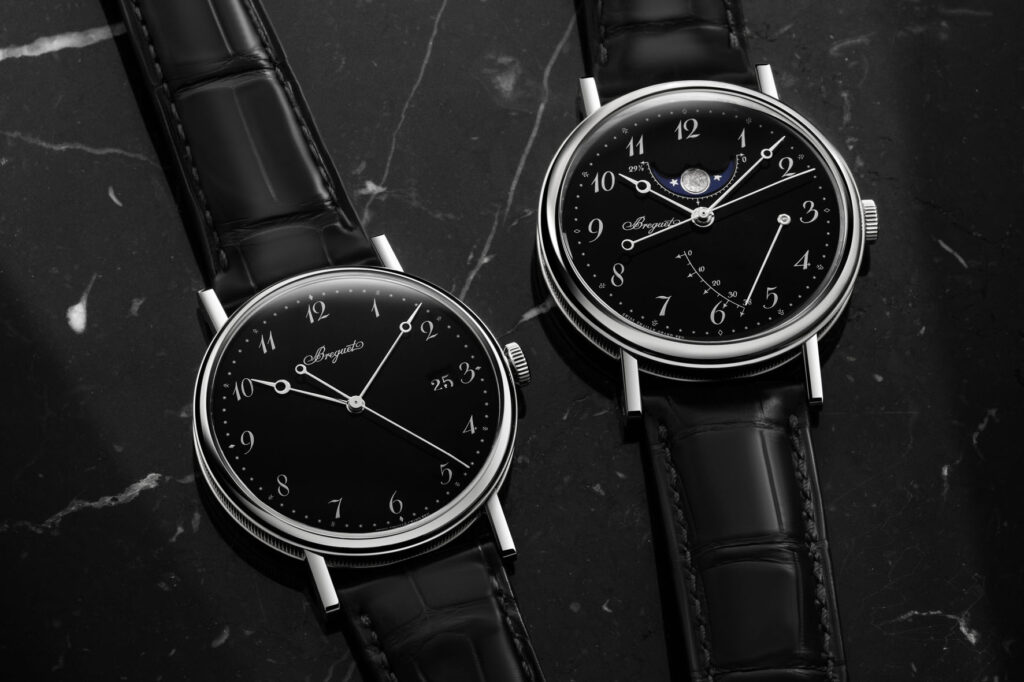
These words are not based on hearsay. We recently had the privilege of entering the workshops in Le Chenit and immersing ourselves in Breguet’s craftsmanship and tradition. We did so on all levels as we experienced the artistic and manual skills of engraving and mechanics, as well as the almost alchemic vocation of those who create grand feu dials. And we held first-hand the two references we are writing about today, which we tried on, observed in detail, appreciated.
BREGUET AND THE ART OF GRAND FEU
Talking about the new Classique 5177 and 7787, one can illustrate the two dials and Breguet’s typical stylistic elements as common features while, on the other hand, the references differ in terms of the case size and the complications they house. Let us start, then, precisely with the enamel dial, which we also find in blue or white on the 5177 reference, and only in white on the 7787. But let us focus on the black here, because the dial seems to be the place where Breguet’s aesthetics are expressed most vividly, starting with its deep colour, obtained thanks to extreme heat.
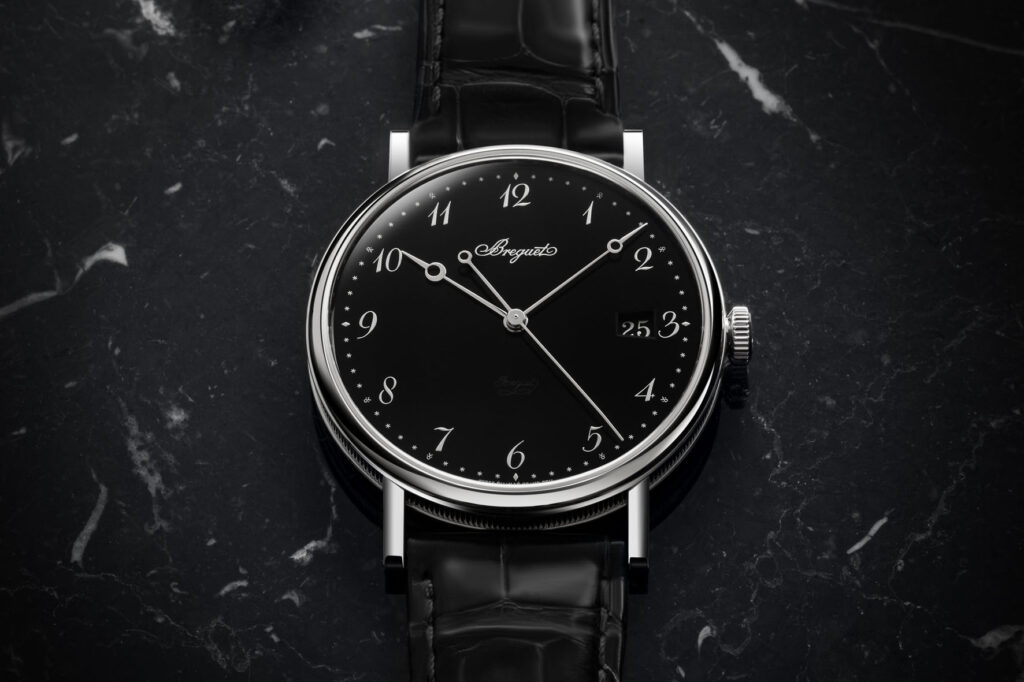
The unique texture of the grand feu enamel is in fact obtained by subjecting the enamel powder to firing in ovens at temperatures of over 800 degrees Celsius, even up to 1200; during these firings, the pigments’ quality must remain constant. Furthermore, the enamel itself must not warp or crack, which can and often does happen. In fact, several firings in a dedicated kiln are necessary, depending on the number of layers, in order to melt elements and pigments, create depth and obtain an unalterable shine. In this case, defective dials must be discarded, which is why master enamellers must be extremely careful and demonstrate a skill and sensitivity honed through years of experience.
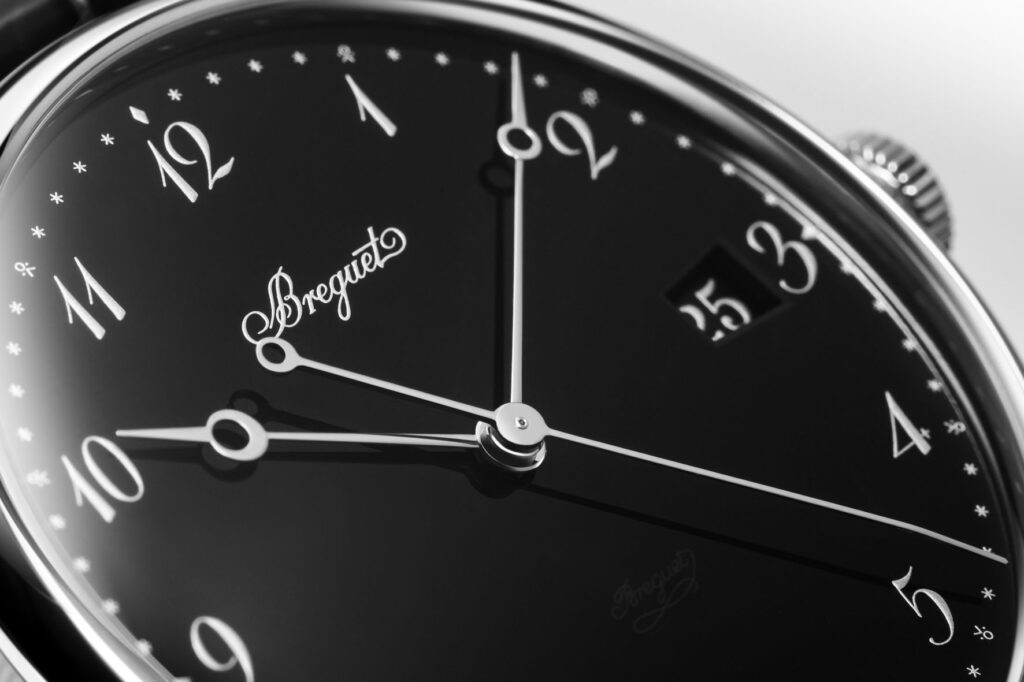
As much as the images from our shoot capture well the essence of this particular dial, in order to fully appreciate a grand feu enamel dial one must hold it in their hands. This is why, during our visit to the manufacture, the privilege we had was much appreciated. For example, on the two dials – to the right in the centre for the 7787, and between the centre and 6 o’clock for the 5177 – we find Breguet’s classic ‘secret signature’, present on some watches since 1795 and introduced by Abraham-Louis himself as an ante litteram anti-counterfeiting measure. Even though it is not visible when observing the dial in the normal way: to be able to see it, it is necessary to look at it closely and position the watch so that the light strikes it at the right angle.
BREGUET CLASSIQUE: PURE DESIGN
As written above, and as our attentive readers know by now, what characterises many watches from the House of Breguet is their strict adherence to the language of design. This applies to both the Classique 5177 and the 7787. In addition to the dial, with its typical ‘pomme évidée’ hands and Breguet numerals (in this case Arabic numerals), there is the case with its well-known aesthetics. On both references it is made of platinum: the 5177 model measures 38 mm in diameter by 8.8 mm in thickness, while the 7787 is 39 x 10.3 mm. Moreover, in the first case we are talking about a three-hand with date display, in the second about a three-hand with moon phase and power reserve. Something more complex.
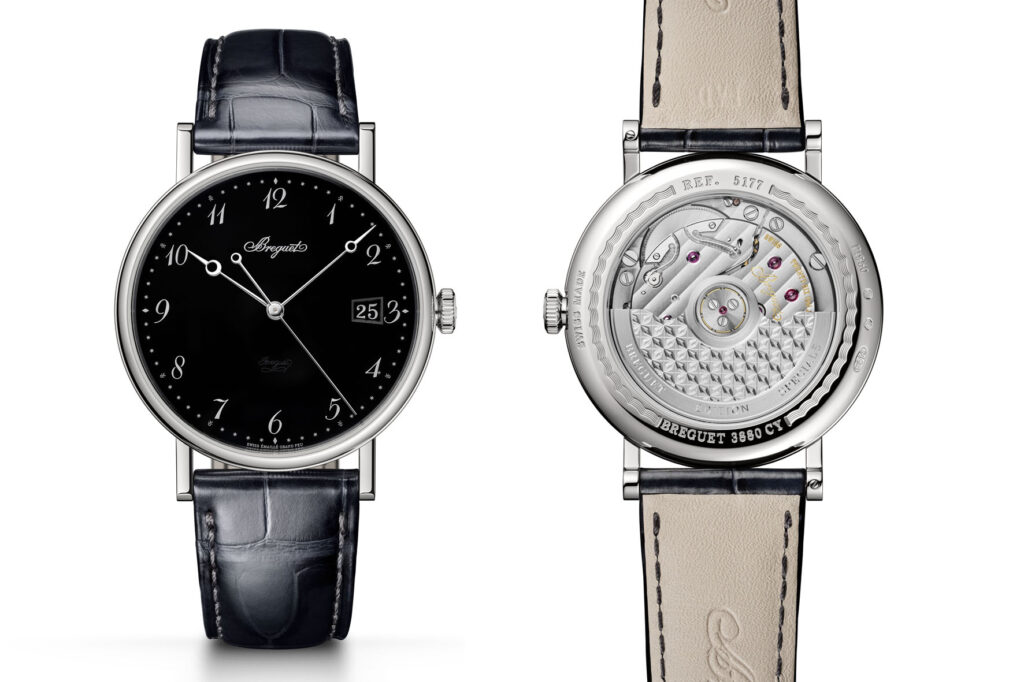
Either way, the two most striking aspects of the design are the ‘coin’ case’s side grooves and the lugs, which give the watch an antique look, almost reminiscent of a pocket watch to which the lugs have been soldered at a later date. Indeed, even on these references, the lugs are not part of a single block of platinum forming the case, but have been soldered on it to achieve a look in line with the Breguet Classique offer.
Having been able to try on these two manufacture watches gave us the opportunity to verify their comfort on the wrist, despite the fact that the elongated appearance of the lugs might suggest otherwise at first glance. If you have never worn one of these two references, you might think of a rather rigid and unergonomic structure, which instead leaves you surprised at how much comfort it can give the watches: on my 16.5 centimetre wrist, they were quite comfortable.
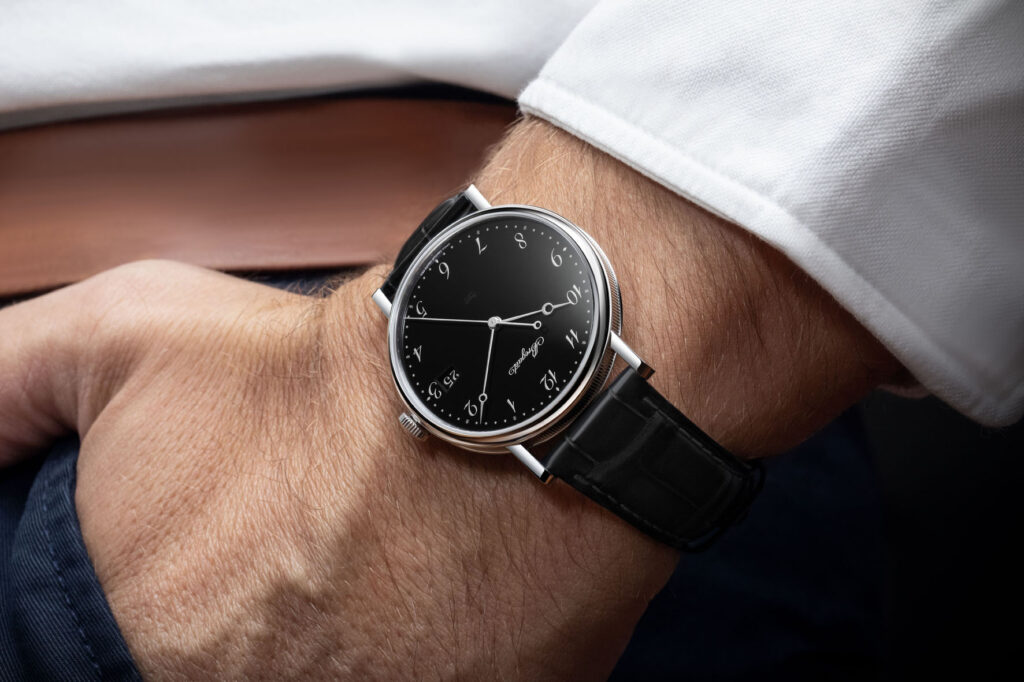
As already written, the two timepieces’ cases are made of platinum. It is the first time this metal is used for the two references, which were previously available in white or rose gold. The brilliance of platinum accentuates the contrast with the enveloping black of the dial. The same applies to the hands, which are rhodium-plated on both references. On the 5177, the date window at 3 o’clock has the typical asymmetrical shape we have already seen in this collection, making it less static. The black date disc contributes to the chromatic uniformity of the dial and makes the presence of the window itself less invasive.

On the Breguet Classique 7787, on the other hand, there are multiple indications because alongside the hours, minutes and seconds there is no date window, but the moon phase and power reserve indicator do appear. The moon phase window is positioned at 12 o’clock and, according to Breguet, can be seen and interpreted as ‘a downward-facing fan, a reassuring smile or the friendly outline of a crescent moon’. Everyone is free to imagine what they want; what jumps out at you is the quality of the Moon’s finish, a hammered white gold disc, which gives a very realistic view of our satellite’s craters. The Moon moves against a starry sky in a blue colour closely resembling the classic Breguet blue.
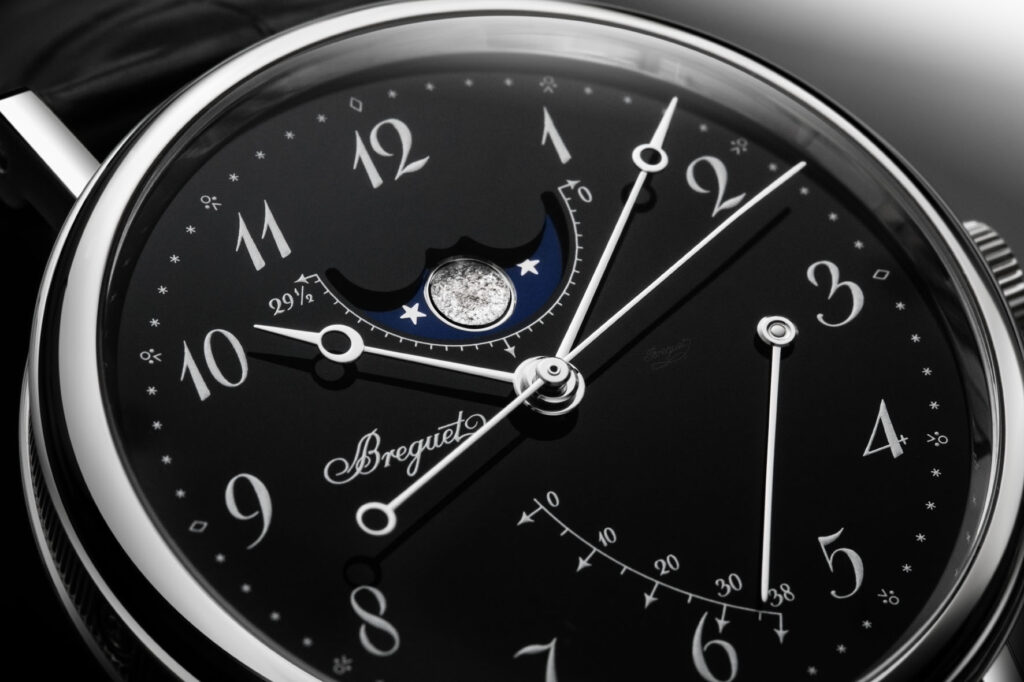
The lunar phase cycle represented on the watch is the natural lunar month, i.e. 29 and a half days (to which 44 minutes and 3 seconds must be added for an accurate reading). This is indicated by the graduated scale along the window’s outer edge, which, in our opinion, is well integrated and balanced with the structure of the dial. More striking, on the other hand, is the power reserve display, which is made of a long pivot hand at 3 o’clock on an arc that almost extends from the centre of the watch to 5:30. With its scale from 0 to 38 hours, it definitely stands out in the timepiece’s overall aesthetics.
STATE-OF-THE-ART MECHANICS
The Breguet Classique 5177 and 7787 are driven respectively by the 777 Q and 591 DRL manufacture calibres. They are the fruit of years of research and have now each become a symbol of reliability for Breguet. Calibre 777 Q can be understood as a modern reinterpretation of classic watchmaking. It is beautifully decorated and finished in the traditional manner that distinguishes Breguet watches, but features some modern updates in the form of silicon components, including the balance spring, escape wheel and anchor. These components lend a non-magnetic quality to the watch as a whole, and help the movement run more smoothly with less lubrication. Breguet was one of the earliest brands to adopt silicon technology and the manufacture has been very committed to its use. Calibre 777 Q has a standard frequency of 4 Hz and a power reserve of 55 hours. The rotor is in white gold and is finished with a beautiful wave motif that, if one may say so, compensates for the lack of guilloché decoration on the grand feu dial.
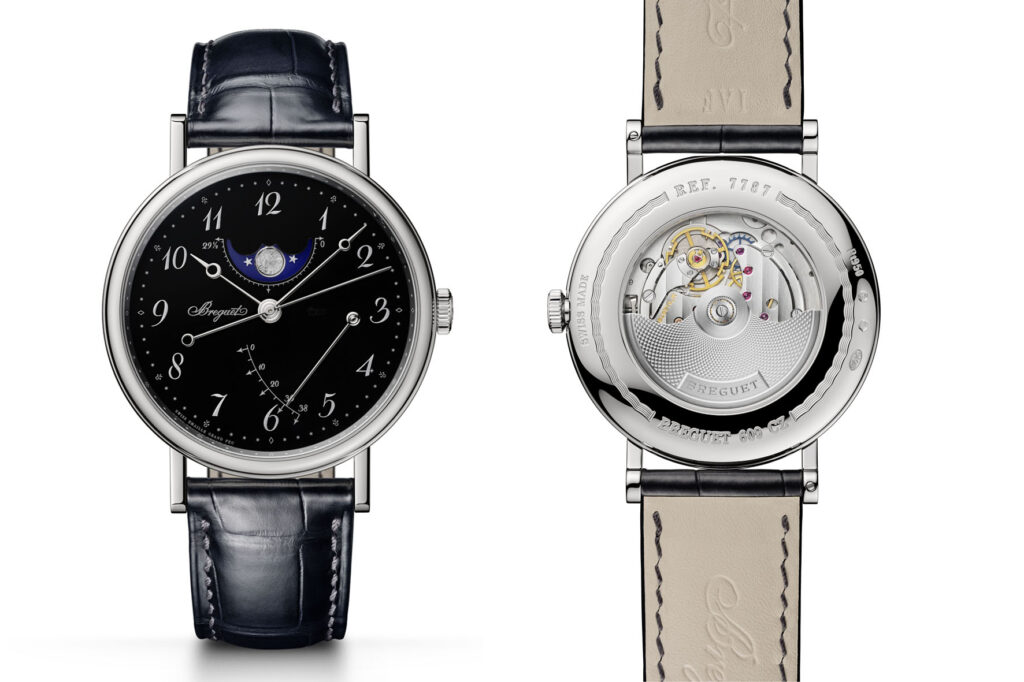
Calibre 591 DRL also works at a frequency of 4 Hz but offers a shorter power reserve than the 55-hour 777 Q, basically due to the greater energy required to drive the moon phase disc. It has a beautiful 22-carat gold rotor, rhodium-plated and decorated with hand-crafted barleycorn guilloché work. Technically, Breguet has paid particular attention to the moon-phase complication; thanks to the addition of a pinion on the disc, it offers a realistic display of the lunar cycle: 29.5303498 days instead of the 29.5 days usually offered by this type of complication. Considering that the actual duration of the lunar revolution is 29.53058888 days, the difference between the display and reality is reduced to one day every 348.7 years. No one will notice, but Breguet’s engineers still deserve an applause.
CLASSIQUE 5177 AND 7787, FORM AND SUBSTANCE
Both watches are completed by a black alligator leather strap – that of the Classique 5177 with a platinum pin buckle; that of the 7787 with a deployant, also in platinum. The difference in complications affects the difference in price between the two references: 43,800 euros for the 5177, 52,100 euros for the 7787. Figures that take into account both the clamorous technical and aesthetic craftsmanship of the watches and the precious material of which the cases are made.
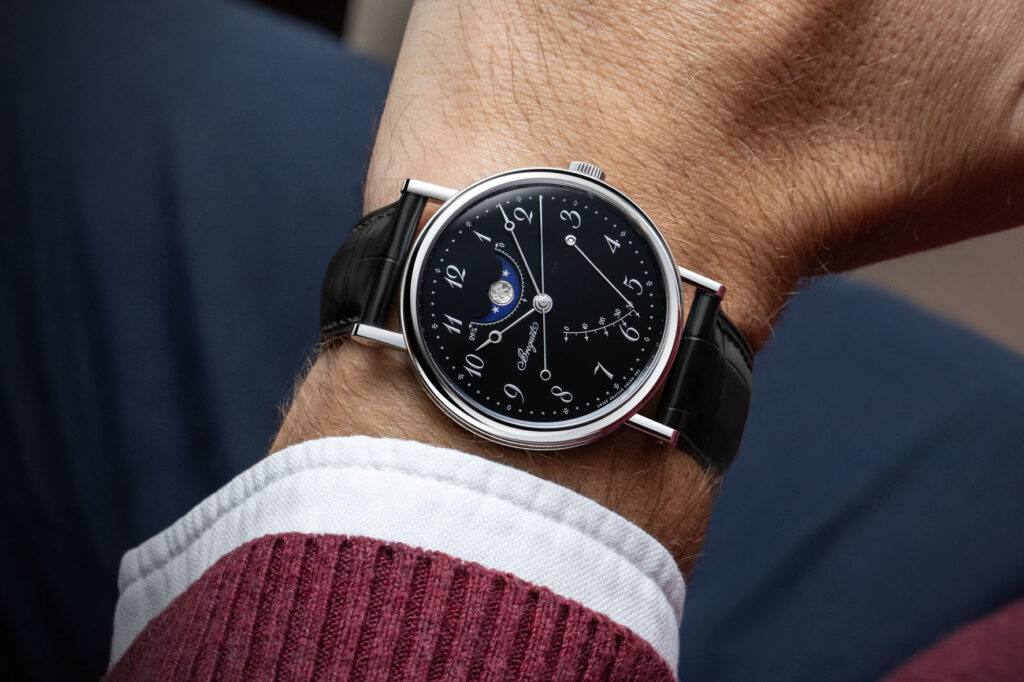
In essence, both the Classique 5177 and the 7787 are two resolutely beautiful watches, as much for their finish as for their design, which possesses the quintessence of the Breguet style; albeit slightly less contemporary, in the case of the 5177, than the blue enamel dial version. After all, is this or is this not the Classique collection? Let’s not forget that designing, drawing and making a fine dress watch is by no means easy, despite the appearances. Because the more ‘simple’ and clean a watch is, the more perfection lurks in the details. Both the Classique 5177 and the 7787 are examples of how Breguet masters the art of detail.
By Davide Passoni
